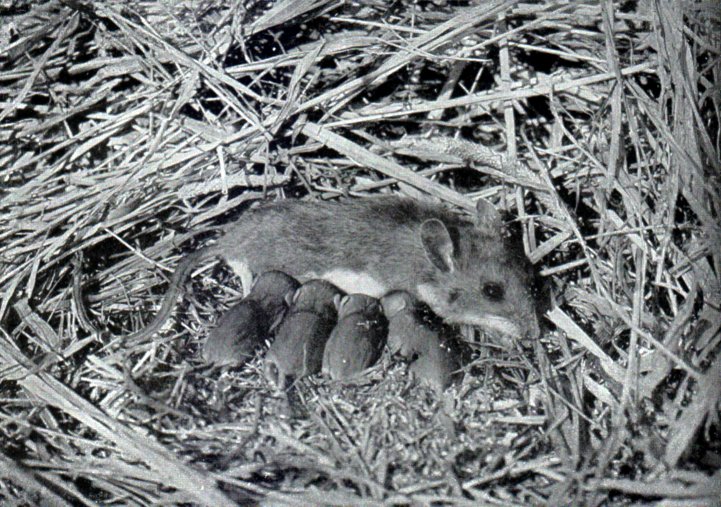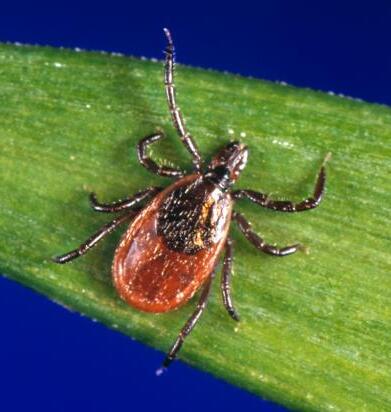|
Peromyscus
''Peromyscus'' is a genus of rodents. They are commonly referred to as deer mice or deermice, not to be confused with the chevrotain or "mouse deer". They are New World mice only distantly related to the common house and laboratory mouse, ''Mus musculus''. From this distant relative, ''Peromyscus'' species are distinguished by relatively larger eyes, and also often two-tone coloring, with darker colors over the dorsum (back), and white abdominal and limb hair-coloring. In reference to the coloring, the word ''Peromyscus'' comes from Greek words meaning "booted mouse". They are also accomplished jumpers and runners by comparison to house mice, and their common name of "deer mouse" (coined in 1833) is in reference to both this agility as well as their two-toned coloring. The most common species of deer mice in the continental United States are two closely related species, '' P. maniculatus'' and '' P. leucopus''. In the United States, ''Peromyscus'' is the most populous mammali ... [...More Info...] [...Related Items...] OR: [Wikipedia] [Google] [Baidu] |
Peromyscus Maniculatus
''Peromyscus maniculatus'', the eastern deermouse, is a rodent native to eastern North America. It is a species of the genus ''Peromyscus'', a closely related group of New World rats and mice, New World mice often called "deermice". When formerly grouped with the western deermouse (''P. sonoriensis''), it was once referred to as the North American deermouse, a species which is no longer recognized. It is fairly widespread across most of North America east of the Mississippi River, with the major exception being the lowland southeastern United States. Like certain other ''Peromyscus'' species, it can be a vector (epidemiology), vector and asymptomatic carrier, carrier of emerging infectious diseases such as hantaviruses and Lyme disease. It is closely related to ''Peromyscus leucopus'', the white-footed mouse. Overview The species in its former broad sense had 61 subspecies, but some of these now belong to ''P. sonoriensis''. They are all tiny mammals that are plentiful in numb ... [...More Info...] [...Related Items...] OR: [Wikipedia] [Google] [Baidu] |
White-footed Mouse
The white-footed mouse (''Peromyscus leucopus'') is a rodent native to North America from southern Canada to the southwestern United States and Mexico. It is a species of the genus ''Peromyscus'', a closely related group of New World mice often called "deermice". In the Maritimes, its only location is a disjunct population in southern Nova Scotia. It is also erroneously known as the woodmouse, a name which instead describes the unrelated '' Apodemus sylvaticus'', particularly in Texas. Description Adults are in length, not counting the tail, which can add another . A young adult weighs . While their maximum lifespan is 96 months, the mean life expectancy for the species is 45.5 months for females and 47.5 for males. In northern climates, the average life expectancy is 12–24 months. The species is similar to ''Peromyscus maniculatus''. White-footed Mouse, Quetico.jpg, In Quetico Provincial Park, Ontario File:Rhus typhina-Peromyscus leucopus-female.jpg, Female on a staghorn s ... [...More Info...] [...Related Items...] OR: [Wikipedia] [Google] [Baidu] |
Sin Nombre Orthohantavirus
Sin Nombre virus (SNV) is the most common cause of hantavirus pulmonary syndrome (HPS) in North America. Sin Nombre virus is transmitted mainly by the western deer mouse (''Peromyscus sonoriensis''). In its natural reservoir, SNV causes an asymptomatic, persistent infection and is spread through excretions, fighting, and grooming. Humans can become infected by inhaling aerosols that contain rodent saliva, urine, or feces, as well as through bites and scratches. In humans, infection leads to HPS, an illness characterized by an early phase of mild and moderate symptoms such as fever, headache, and fatigue, followed by sudden respiratory failure. The case fatality rate from infection is 30 to 50 percent. The genome of SNV is about 12.3 kilobases (kb) in length and segmented into three negative-sense, single-stranded RNA (-ssRNA) strands. The small strand encodes the viral nucleoprotein, the medium strand encodes the viral spike protein, which attaches to cell receptors for entry in ... [...More Info...] [...Related Items...] OR: [Wikipedia] [Google] [Baidu] |
Laboratory Mouse
The laboratory mouse or lab mouse is a small mammal of the order Rodentia which is bred and used for scientific research or feeders for certain pets. Laboratory animal sources for these mice are usually of the species ''Mus musculus''. They are the most commonly used mammalian research model and are used for research in genetics, physiology, psychology, medicine and other scientific disciplines. Mice belong to the Euarchontoglires clade, which includes humans. This close relationship, the associated high homology with humans, their ease of maintenance and handling, and their high reproduction rate, make mice particularly suitable models for human-oriented research. The laboratory mouse genome has been sequenced and many mouse genes have human homologues. Lab mice are sold at pet stores for snake food and can also be kept as pets. Other mouse species sometimes used in laboratory research include two American species, the white-footed mouse (''Peromyscus leucopus'') and ... [...More Info...] [...Related Items...] OR: [Wikipedia] [Google] [Baidu] |
New World Mouse
The New World rats and mice are a group of related rodents found in North and South America. They are extremely diverse in appearance and ecology, ranging from the tiny ''Baiomys'' to the large '' Kunsia''. They represent one of the few examples of muroid rodents (along with the voles) in North America, and the only example of muroid rodents to have made it into South America. The New World rats and mice are often considered part of a single subfamily, Sigmodontinae, but the recent trend among muroid taxonomists is to recognize three separate subfamilies. This strategy better represents the extreme diversity of species numbers and ecological types. Some molecular phylogenetic studies have suggested that the New World rats and mice are not a monophyletic group, but this is yet to be confirmed. Their closest relatives are clearly the hamsters and voles. The New World rats and mice are divided into 3 subfamilies, 12 tribes, and 84 genera. Classification *Family Cricetidae - h ... [...More Info...] [...Related Items...] OR: [Wikipedia] [Google] [Baidu] |
Miocene
The Miocene ( ) is the first epoch (geology), geological epoch of the Neogene Period and extends from about (Ma). The Miocene was named by Scottish geologist Charles Lyell; the name comes from the Greek words (', "less") and (', "new") and means "less recent" because it has 18% fewer modern marine invertebrates than the Pliocene has. The Miocene followed the Oligocene and preceded the Pliocene. As Earth went from the Oligocene through the Miocene and into the Pliocene, the climate slowly cooled towards a series of ice ages. The Miocene boundaries are not marked by distinct global events but by regionally defined transitions from the warmer Oligocene to the cooler Pliocene Epoch. During the Early Miocene, Afro-Arabia collided with Eurasia, severing the connection between the Mediterranean and Indian Oceans, and allowing the interchange of fauna between Eurasia and Africa, including the dispersal of proboscideans and Ape, hominoids into Eurasia. During the late Miocene, the conn ... [...More Info...] [...Related Items...] OR: [Wikipedia] [Google] [Baidu] |
SARS-CoV-2
Severe acute respiratory syndrome coronavirus 2 (SARS‑CoV‑2) is a strain of coronavirus that causes COVID-19, the respiratory illness responsible for the COVID-19 pandemic. The virus previously had the Novel coronavirus, provisional name 2019 novel coronavirus (2019-nCoV), and has also been called human coronavirus 2019 (HCoV-19 or hCoV-19). First identified in the city of Wuhan, Hubei, China, the World Health Organization designated the outbreak a public health emergency of international concern from January 30, 2020, to May 5, 2023. SARS‑CoV‑2 is a positive-sense single-stranded RNA virus that is Contagious disease, contagious in humans. SARS‑CoV‑2 is a strain of the species ''Betacoronavirus pandemicum'' (SARSr-CoV), as is SARS-CoV-1, the virus that caused the 2002–2004 SARS outbreak. There are animal-borne coronavirus strains more closely related to SARS-CoV-2, the most closely known relative being the BANAL-52 bat coronavirus. SARS-CoV-2 is of Zoonosis, z ... [...More Info...] [...Related Items...] OR: [Wikipedia] [Google] [Baidu] |
Laboratory Rat
Laboratory rats or lab rats are strain (biology), strains of the rat subspecies ''Rattus norvegicus domestica'' (Domestic Norwegian rat) which are bred and kept for scientific research. While Animal testing on rodents, less commonly used for research than laboratory mice, rats have served as an important animal model for research in psychology and biomedical science, and "lab rat" is commonly used as an idiom for a test subject. Origins of rat breeding In 18th-century Europe, wild brown rats (''Rattus norvegicus'') ran rampant and this infestation fueled the industry of rat-catching. Rat-catchers would not only make money by trapping the rodents, but also by selling them rat meat, for food or, more commonly, for rat-baiting. Rat-baiting was a popular sport, which involved filling a pit with rats and timing how long it took for a terrier to kill them all. Over time, breeding the rats for these contests may have produced color variations, notably the albino rat, albino and hoode ... [...More Info...] [...Related Items...] OR: [Wikipedia] [Google] [Baidu] |
Speciation
Speciation is the evolutionary process by which populations evolve to become distinct species. The biologist Orator F. Cook coined the term in 1906 for cladogenesis, the splitting of lineages, as opposed to anagenesis, phyletic evolution within lineages. Charles Darwin was the first to describe the role of natural selection in speciation in his 1859 book ''On the Origin of Species''. He also identified sexual selection as a likely mechanism, but found it problematic. There are four geographic modes of speciation in nature, based on the extent to which speciating populations are isolated from one another: allopatric speciation, allopatric, peripatric speciation, peripatric, parapatric speciation, parapatric, and sympatric speciation, sympatric. Whether genetic drift is a minor or major contributor to speciation is the subject of much ongoing discussion. Rapid sympatric speciation can take place through polyploidy, such as by doubling of chromosome number; the result is progeny wh ... [...More Info...] [...Related Items...] OR: [Wikipedia] [Google] [Baidu] |
Phylogeography
Phylogeography is the study of the historical processes that may be responsible for the past to present geographic distributions of genealogical lineages. This is accomplished by considering the geographic distribution of individuals in light of genetics, particularly population genetics. This term was introduced to describe geographically structured genetic signals within and among species. An explicit focus on a species' biogeography/biogeographical past sets phylogeography apart from classical population genetics and phylogenetics. Past events that can be inferred include population expansion, population bottlenecks, vicariance, dispersal, and human migration, migration. Recently developed approaches integrating coalescent theory or the genealogical history of alleles and distributional information can more accurately address the relative roles of these different historical forces in shaping current patterns. Historical development The term phylogeography was first used by Joh ... [...More Info...] [...Related Items...] OR: [Wikipedia] [Google] [Baidu] |
Ehrlichiosis
Ehrlichiosis is a tick-borne bacterial infection, caused by bacteria of the family Anaplasmataceae, genera '' Ehrlichia'' and '' Anaplasma''. These obligate intracellular bacteria infect and kill white blood cells. The average reported annual incidence is on the order of 2.3 cases per million people. Types Six (see note below) species have been shown to cause human infection: * '' Anaplasma phagocytophilum'' causes Human granulocytic anaplasmosis. ''A. phagocytophilum'' is endemic to New England and the north-central and Pacific regions of the United States. * '' Ehrlichia ewingii'' causes human ewingii ehrlichiosis. ''E. ewingii'' primarily infects deer and dogs (see Ehrlichiosis (canine)). ''E. ewingii'' is most common in the south-central and southeastern states. * '' Ehrlichia chaffeensis'' causes human monocytic ehrlichiosis. ''E. chaffeensis'' is most common in the south-central and southeastern states. * '' Ehrlichia canis'' * '' Neorickettsia sennetsu'' *'' Ehrl ... [...More Info...] [...Related Items...] OR: [Wikipedia] [Google] [Baidu] |








